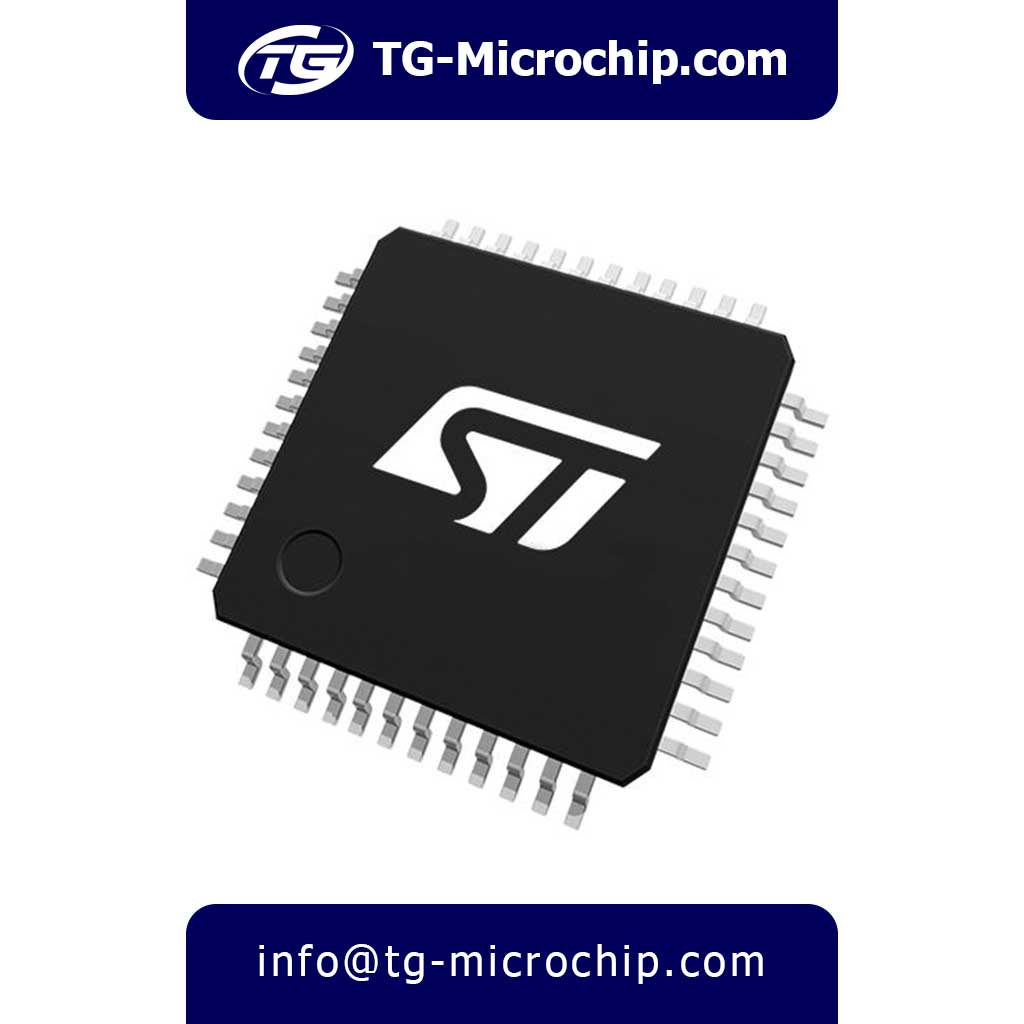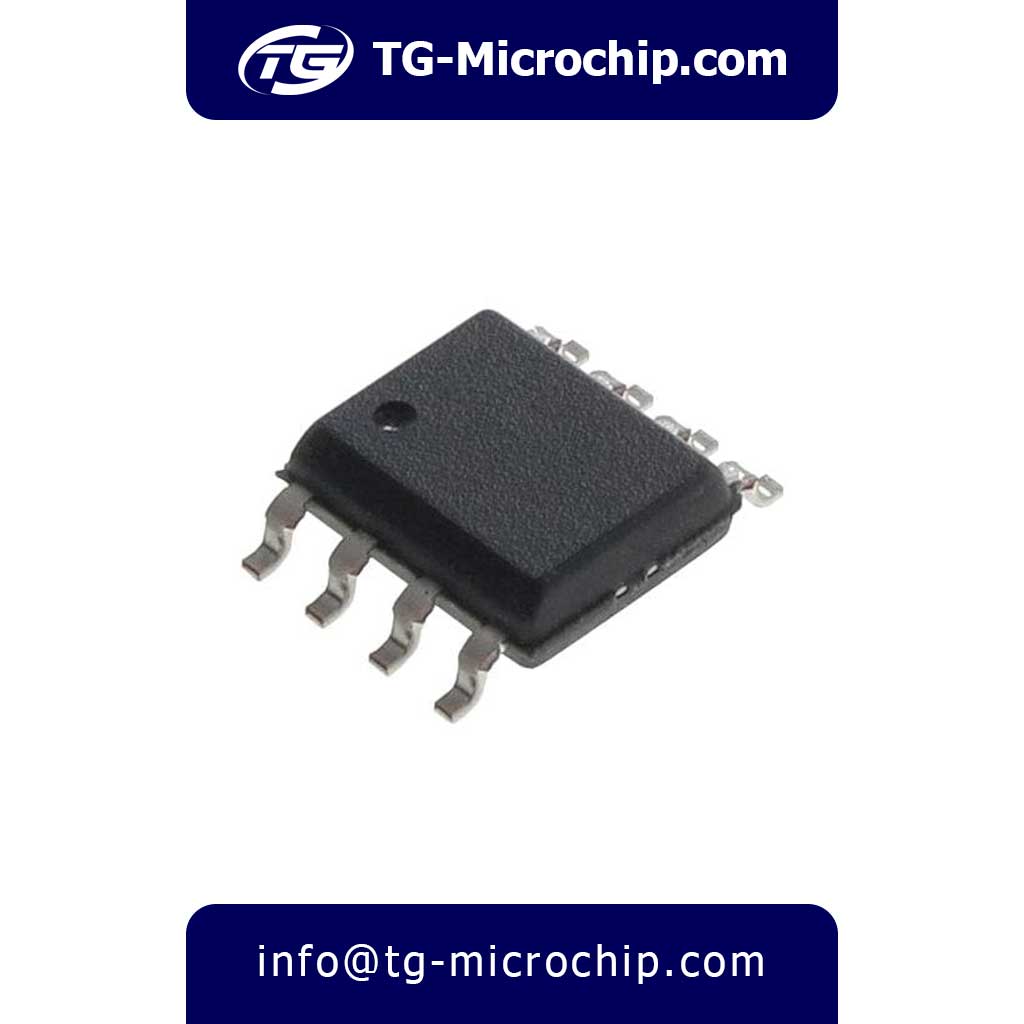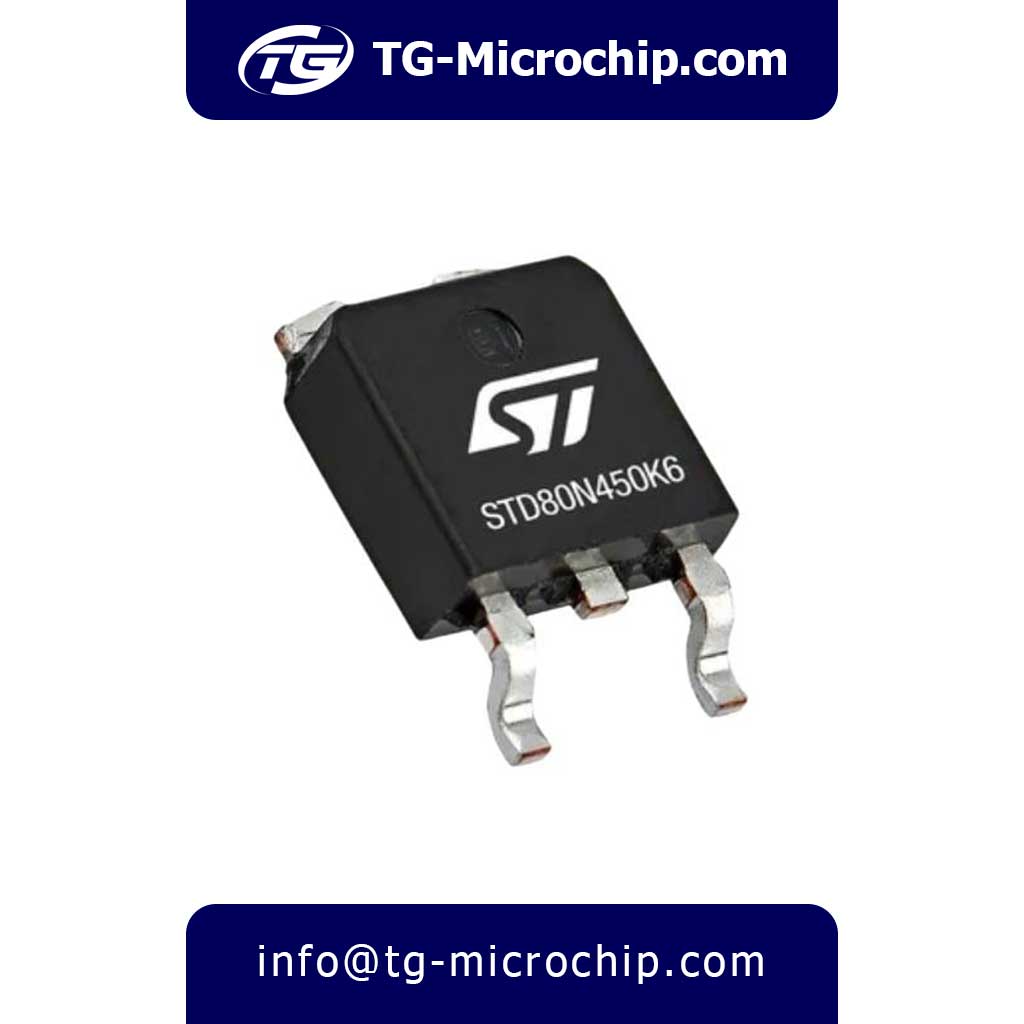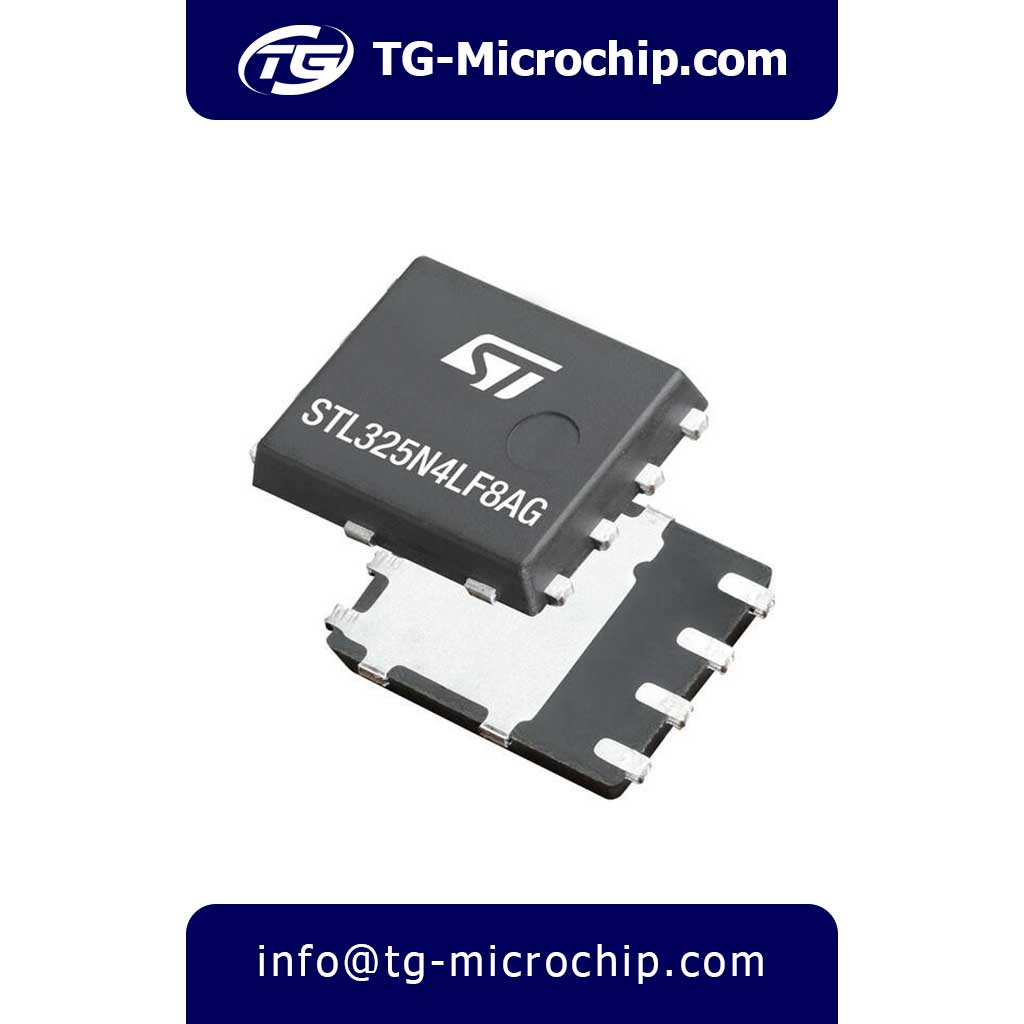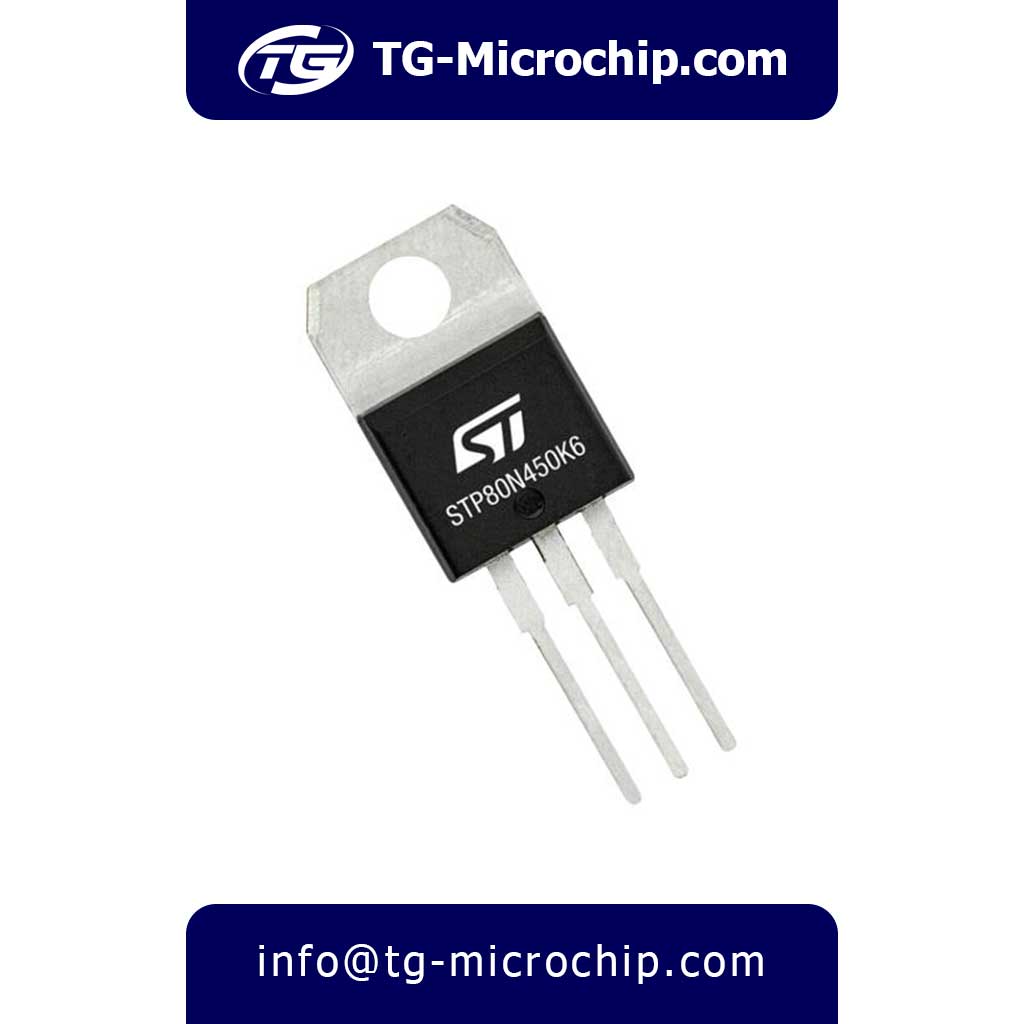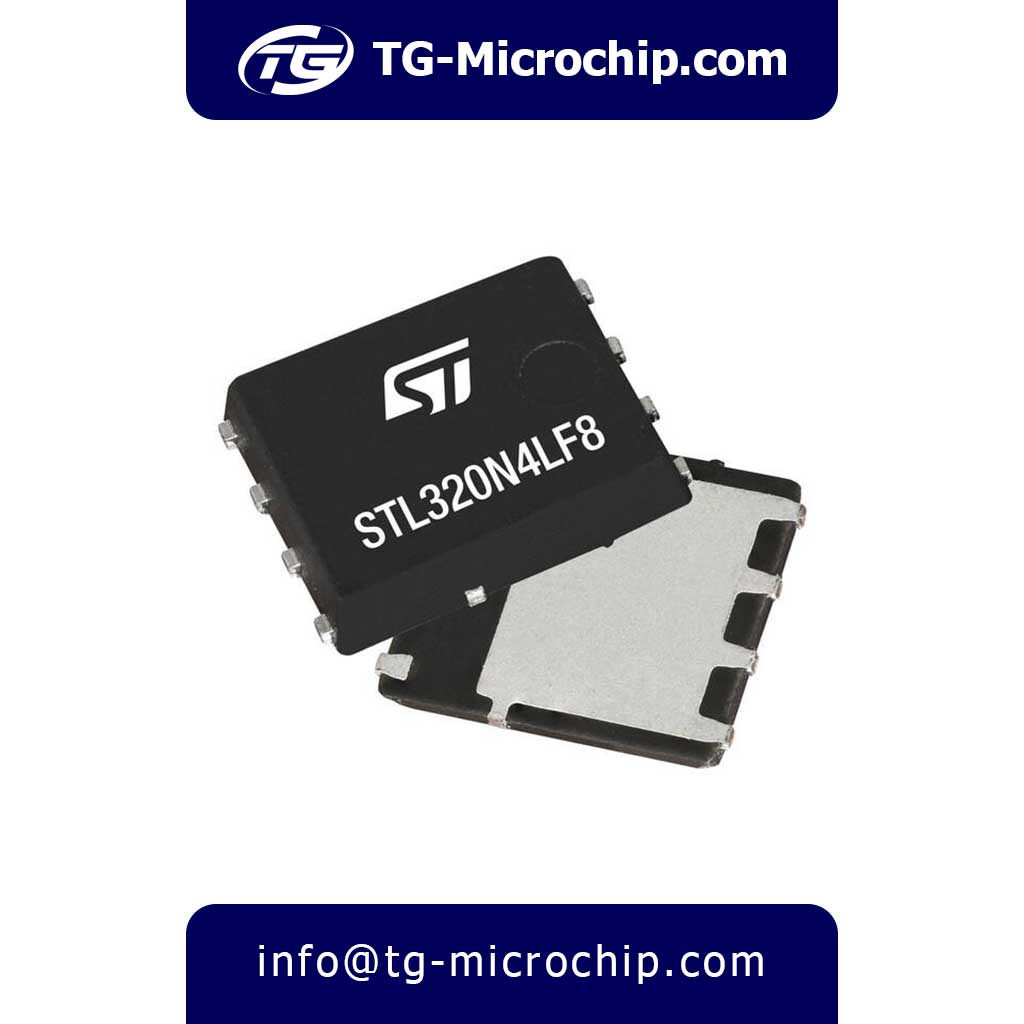For order or price inquiry of STM32F103C8T6 STMicroelectronics Please click on Buy Order button and fill the RFQ form we will check out inventory and offer you our best price.
Quick Access
About
The STM32F103C8T6 is a highly regarded microcontroller from STMicroelectronics, part of the STM32 family that utilizes the ARM Cortex-M3 core architecture. This microcontroller is designed to deliver a balance of performance, power efficiency, and versatility, making it suitable for a wide range of applications. With a maximum clock frequency of 72 MHz, it provides sufficient processing power for various embedded systems, from simple control tasks to more complex applications requiring real-time processing.
One of the standout features of the STM32F103C8T6 is its memory configuration, which includes 64 KB of Flash memory and 20 KB of SRAM. This memory capacity allows developers to store and execute complex programs while maintaining efficient data handling. Additionally, the microcontroller supports a variety of communication interfaces, including multiple I2C, USART, and SPI channels, as well as a USB 2.0 full-speed interface. This rich set of peripherals enables seamless integration with other devices and components, enhancing the microcontroller’s functionality in diverse applications.
The STM32F103C8T6 is packaged in a compact LQFP-48 format, making it suitable for space-constrained designs. It features 37 GPIO pins, which can be configured for various input and output functions, providing flexibility in hardware design. The microcontroller also includes a 12-bit ADC with up to 1 Msps conversion speed, allowing for precise analog signal processing. Furthermore, it incorporates several timers and an independent watchdog timer, which are essential for real-time applications and system reliability.
In terms of power management, the STM32F103C8T6 offers multiple low-power modes, making it an excellent choice for battery-operated devices and energy-efficient applications. Its operating voltage range of 2.0V to 3.6V and wide temperature range of -40°C to 85°C ensure reliable performance in various environmental conditions. Overall, the STM32F103C8T6 microcontroller is a versatile and powerful solution for developers looking to create innovative embedded systems across a wide array of industries, including consumer electronics, industrial automation, medical devices, and the Internet of Things (IoT).
Applications
- Consumer Electronics:
- The STM32F103C8T6 is widely used in consumer electronic devices such as smart home appliances, remote controls, and wearable technology. Its low power consumption and efficient processing capabilities make it ideal for battery-operated devices.
- Industrial Automation:
- In industrial settings, the microcontroller is employed in automation systems, including programmable logic controllers (PLCs), motor control systems, and sensor interfaces. Its robust performance and real-time processing capabilities enable precise control and monitoring of industrial processes.
- Motor Control:
- The STM32F103C8T6 is suitable for various motor control applications, including brushless DC motors, stepper motors, and servo motors. Its integrated timers and PWM outputs facilitate efficient motor control, making it ideal for robotics and automation systems.
- Medical Devices:
- The microcontroller is utilized in medical devices such as patient monitoring systems, diagnostic equipment, and portable medical instruments. Its reliability, low power consumption, and ability to process analog signals make it suitable for critical healthcare applications.
- Internet of Things (IoT):
- The STM32F103C8T6 is a popular choice for IoT applications due to its connectivity options, including USB, I2C, and USART interfaces. It can be used in smart sensors, data loggers, and connected devices that require efficient data processing and communication.
- Robotics:
- In robotics, the microcontroller is used for controlling robotic arms, drones, and autonomous vehicles. Its ability to handle multiple inputs and outputs, along with real-time processing capabilities, makes it suitable for complex robotic applications.
- Home Automation:
- The STM32F103C8T6 is often found in home automation systems, enabling control of lighting, heating, and security systems. Its low power modes and communication interfaces allow for seamless integration into smart home networks.
- Educational Projects:
- Due to its affordability and ease of use, the STM32F103C8T6 is popular among hobbyists and in educational settings for teaching embedded systems and microcontroller programming. It serves as a great platform for prototyping and experimentation.
Specifications
| Feature | Specification |
|---|---|
| Series | STM32F1 |
| Product Category | Microcontroller |
| Product Type | 32-bit ARM Cortex-M3 MCU |
| Packaging | LQFP-48 |
| Microcontroller Type | 32-bit ARM Cortex-M3 |
| Core Architecture | ARMv7-M |
| Max Clock Frequency | 72 MHz |
| Flash Memory | 64 KB |
| SRAM | 20 KB |
| EEPROM | None (emulated in Flash) |
| Operating Voltage | 2.0V to 3.6V |
| Temperature Range | -40°C to 85°C |
| Pin Count | 48 |
| GPIO Pins | 37 |
| ADC | 12-bit, 10 channels |
| ADC Conversion Speed | Up to 1 Msps |
| DAC | None |
| Timers | 3 x 16-bit general-purpose timers, 1 x 16-bit advanced-control timer |
| Watchdog Timer | Independent and window watchdog |
| Communication Interfaces | |
| – I2C Interfaces | 2 |
| – USART Interfaces | 3 |
| – SPI Interfaces | 1 |
| – USB | 1 x USB 2.0 full-speed |
| – CAN | No |
| – SDIO | No |
| DMA Channels | 7 |
| Debugging Interface | SWD (Serial Wire Debug), JTAG |
| Clock Control | Internal 8 MHz RC oscillator, external clock source |
| Low Power Modes | Sleep, Stop, and Standby modes |
| Boot Modes | Boot from Flash, System Memory, or SRAM |
| Interrupts | Up to 16 external interrupts |
| RTC | No |
| PWM Outputs | Yes (via timers) |
| Operating Conditions | |
| – Supply Voltage | 2.0V to 3.6V |
| – Input Voltage Levels | VIL: 0.3 x VDD, VIH: 0.7 x VDD |
| Package Dimensions | 7 mm x 7 mm (LQFP-48) |
| Weight | Approximately 0.5 g |
Advantages
- High Performance:
- The STM32F103C8T6 features an ARM Cortex-M3 core that operates at a maximum clock frequency of 72 MHz. This provides ample processing power for a wide range of applications, enabling efficient execution of complex algorithms and real-time tasks.
- Rich Peripheral Set:
- The microcontroller includes a variety of communication interfaces, such as multiple I2C, USART, and SPI channels, as well as a USB 2.0 full-speed interface. This rich set of peripherals allows for easy integration with other devices and components, enhancing the overall functionality of the system.
- Flexible Memory Options:
- With 64 KB of Flash memory and 20 KB of SRAM, the STM32F103C8T6 provides sufficient memory for storing programs and handling data. The ability to emulate EEPROM in Flash memory further expands its storage capabilities.
- Low Power Consumption:
- The STM32F103C8T6 is designed with power efficiency in mind, featuring multiple low-power modes (Sleep, Stop, and Standby) that help reduce energy consumption. This makes it an excellent choice for battery-operated devices and energy-sensitive applications.
- Wide Operating Temperature Range:
- The microcontroller operates effectively in a temperature range of -40°C to 85°C, ensuring reliable performance in harsh environments. This makes it suitable for industrial and outdoor applications.
- Compact Package:
- Packaged in an LQFP-48 format, the STM32F103C8T6 is compact and suitable for space-constrained designs. Its small footprint allows for integration into various applications without taking up excessive board space.
- Robust Development Ecosystem:
- STMicroelectronics provides a comprehensive development ecosystem, including STM32CubeIDE, STM32CubeMX, and extensive libraries and examples. This support simplifies the development process and accelerates time-to-market for new products.
- Community Support:
- The STM32F103C8T6 benefits from a large and active community of developers. This community provides valuable resources, forums, and shared projects, making it easier for new users to find help and inspiration.
- Real-Time Capabilities:
- The microcontroller’s architecture supports low-latency interrupt handling and efficient task scheduling, making it suitable for real-time applications that require quick response times.
- Versatile Applications:
- The STM32F103C8T6 is versatile and can be used in a wide range of applications, including consumer electronics, industrial automation, medical devices, IoT solutions, and robotics. Its adaptability to different environments and requirements ensures its relevance across various industries.
- Integrated Analog Features:
- The STM32F103C8T6 includes a 12-bit ADC with up to 10 channels, allowing for precise analog signal acquisition. This feature is particularly beneficial for applications that require sensor interfacing and data conversion from analog to digital formats.
- Direct Memory Access (DMA):
- The microcontroller supports 7 DMA channels, enabling efficient data transfer between peripherals and memory without CPU intervention. This feature reduces CPU load and improves overall system performance, especially in data-intensive applications.
- Versatile Timer Functions:
- With multiple timers available, including general-purpose and advanced-control timers, the STM32F103C8T6 can handle various timing and PWM applications. This versatility is essential for motor control, signal generation, and event scheduling.
- Boot Configuration Options:
- The STM32F103C8T6 supports multiple boot modes, allowing developers to choose how the microcontroller initializes and loads applications. This flexibility is useful for firmware updates and recovery processes.
- Enhanced Security Features:
- The microcontroller includes features such as a read-out protection mechanism, which helps safeguard the firmware from unauthorized access. This is particularly important in applications where intellectual property protection is a concern.
- Scalability within the STM32 Family:
- The STM32F103C8T6 is part of the larger STM32 family, allowing developers to easily scale their designs to other STM32 microcontrollers with different specifications. This scalability facilitates product evolution and adaptation to changing requirements.
- Cost-Effectiveness:
- The STM32F103C8T6 offers a competitive price point for the features and performance it provides. This cost-effectiveness makes it an attractive option for both hobbyists and commercial product developers.
- Ease of Prototyping:
- The availability of development boards and kits, such as the STM32F103C8T6-based “Blue Pill,” makes it easy for developers to prototype and test their ideas quickly. This accessibility encourages experimentation and innovation.
- Support for Multiple Programming Languages:
- In addition to C and C++, the STM32F103C8T6 can be programmed using other languages and frameworks, such as MicroPython and Arduino, broadening its appeal to a wider range of developers and hobbyists.
- Long-Term Availability:
- STMicroelectronics typically offers long-term availability for its microcontrollers, ensuring that developers can rely on the STM32F103C8T6 for ongoing projects and products without concerns about sudden discontinuation.
Comparison With Similar Components
| Feature/Specification | STM32F103C8T6 | Microchip PIC32MX250F128B | NXP LPC1768 | Atmel ATmega328P |
|---|---|---|---|---|
| Core Architecture | ARM Cortex-M3 | MIPS M4K | ARM Cortex-M3 | AVR 8-bit |
| Max Clock Frequency | 72 MHz | 80 MHz | 120 MHz | 20 MHz |
| Flash Memory | 64 KB | 128 KB | 512 KB | 32 KB |
| SRAM | 20 KB | 32 KB | 64 KB | 2 KB |
| Operating Voltage | 2.0V to 3.6V | 2.3V to 3.6V | 3.3V | 1.8V to 5.5V |
| Temperature Range | -40°C to 85°C | -40°C to 85°C | -40°C to 85°C | -40°C to 85°C |
| GPIO Pins | 37 | 32 | 70 | 23 |
| ADC | 12-bit, 10 channels | 10-bit, 16 channels | 12-bit, 8 channels | 10-bit, 6 channels |
| Communication Interfaces | 2 I2C, 3 USART, 1 SPI, USB | 2 I2C, 5 USART, 1 SPI, USB | 2 I2C, 2 USART, 1 SPI, USB | 1 I2C, 1 USART, 1 SPI |
| Timers | 3 general-purpose, 1 advanced | 5 timers | 4 timers | 3 timers |
| DMA Channels | 7 | 5 | 8 | No |
| Package Type | LQFP-48 | TQFP-44 | LQFP-64 | TQFP-32 |
| Development Ecosystem | STM32CubeIDE, STM32CubeMX | MPLAB X IDE | LPCXpresso IDE | Arduino IDE |
| Typical Applications | IoT, consumer electronics, robotics | Embedded systems, IoT | Industrial control, IoT | Simple embedded systems, Arduino |
Key Comparisons
- Core Architecture:
- The STM32F103C8T6 and NXP LPC1768 both utilize ARM Cortex-M3 cores, providing similar performance characteristics. In contrast, the Microchip PIC32MX250F128B uses a MIPS architecture, while the Atmel ATmega328P is based on an 8-bit AVR architecture, which is less powerful for complex applications.
- Performance:
- The STM32F103C8T6 operates at a maximum clock frequency of 72 MHz, which is competitive with the Microchip PIC32MX250F128B (80 MHz) but lower than the NXP LPC1768 (120 MHz). The Atmel ATmega328P has a significantly lower clock speed of 20 MHz.
- Memory:
- The STM32F103C8T6 has 64 KB of Flash and 20 KB of SRAM, which is less than the Microchip PIC32MX250F128B (128 KB Flash, 32 KB SRAM) and the NXP LPC1768 (512 KB Flash, 64 KB SRAM). The Atmel ATmega328P has the least memory with 32 KB Flash and 2 KB SRAM.
- Peripheral Set:
- The STM32F103C8T6 offers a good range of communication interfaces, including USB, which is not available on the Atmel ATmega328P. The Microchip PIC32MX250F128B has a more extensive set of communication options, making it suitable for more complex applications.
- Power Consumption:
- The STM32F103C8T6 is designed for low power consumption, making it suitable for battery-operated devices. The operating voltage range of 2.0V to 3.6V is comparable to the Microchip and NXP options, while the Atmel ATmega328P can operate at a wider voltage range (1.8V to 5.5V), which may be advantageous for certain applications.
- Development Ecosystem:
- The STM32F103C8T6 benefits from a robust development ecosystem with STM32CubeIDE and STM32CubeMX, which simplifies configuration and development. The Microchip and NXP microcontrollers also have strong development environments, while the Atmel ATmega328P is widely supported by the Arduino IDE, making it very accessible for hobbyists.
Conclusion
The STM32F103C8T6 microcontroller stands out for its balance of performance, features, and low power consumption, making it suitable for a wide range of applications. While it competes well with similar components like the Microchip PIC32MX250F128B and NXP LPC1768, it may be more advantageous for developers looking for a cost-effective solution with a rich set of peripherals and a strong development ecosystem. The choice between these microcontrollers ultimately depends on the specific requirements of the application, including processing power, memory needs, and peripheral support.
Frequently Asked Questions ( FAQs )
- What is the core architecture of the STM32F103C8T6?
- The STM32F103C8T6 is based on the ARM Cortex-M3 core architecture, which is a 32-bit processor designed for low-power and high-performance applications.
- What is the maximum clock frequency of the STM32F103C8T6?
- The microcontroller can operate at a maximum clock frequency of 72 MHz, providing sufficient processing power for various embedded applications.
- How much Flash and SRAM memory does the STM32F103C8T6 have?
- The STM32F103C8T6 features 64 KB of Flash memory for program storage and 20 KB of SRAM for data storage.
- What communication interfaces are available on the STM32F103C8T6?
- The microcontroller includes multiple communication interfaces: 2 I2C interfaces, 3 USART interfaces, 1 SPI interface, and 1 USB 2.0 full-speed interface.
- Does the STM32F103C8T6 support analog-to-digital conversion?
- Yes, the STM32F103C8T6 has a 12-bit ADC with up to 10 channels and a conversion speed of 1 Msps, allowing for precise analog signal processing.
- What are the power supply requirements for the STM32F103C8T6?
- The microcontroller operates within a voltage range of 2.0V to 3.6V, making it suitable for battery-powered and low-voltage applications.
- What is the operating temperature range of the STM32F103C8T6?
- The STM32F103C8T6 can operate in a temperature range of -40°C to 85°C, ensuring reliable performance in various environmental conditions.
- What package type does the STM32F103C8T6 come in?
- The STM32F103C8T6 is available in an LQFP-48 (Low-profile Quad Flat Package) format, which is compact and suitable for space-constrained designs.
- Can the STM32F103C8T6 be used for motor control applications?
- Yes, the STM32F103C8T6 is well-suited for motor control applications, thanks to its integrated timers and PWM outputs, which facilitate efficient motor control.
- Is there support for debugging and development?
- The STM32F103C8T6 supports SWD (Serial Wire Debug) and JTAG interfaces for debugging and programming, making it easier for developers to work with the microcontroller.
- What are the low-power modes available in the STM32F103C8T6?
- The microcontroller features multiple low-power modes, including Sleep, Stop, and Standby modes, which help reduce power consumption in battery-operated applications.
- What types of applications can the STM32F103C8T6 be used for?
- The STM32F103C8T6 is versatile and can be used in various applications, including consumer electronics, industrial automation, medical devices, IoT applications, robotics, and home automation systems.
- What development tools are available for the STM32F103C8T6?
- A variety of development tools are available, including the STM32CubeIDE, Keil MDK, IAR Embedded Workbench, and GCC-based toolchains. STMicroelectronics also provides the STM32CubeMX software for configuring peripherals and generating initialization code.
- Is there a community or support available for STM32F103C8T6?
- Yes, there is a large community of developers using STM32 microcontrollers. You can find support through forums, such as the ST Community, Stack Overflow, and various online groups dedicated to STM32 development.
- Can I use the STM32F103C8T6 for real-time applications?
- Yes, the STM32F103C8T6 is suitable for real-time applications due to its ARM Cortex-M3 core, which supports low-latency interrupt handling and efficient task scheduling.
- What is the maximum number of external interrupts supported?
- The STM32F103C8T6 supports up to 16 external interrupts, allowing for flexible handling of various input signals.
- Does the STM32F103C8T6 support USB host functionality?
- The STM32F103C8T6 supports USB device functionality but does not support USB host mode. It can be used to connect to USB peripherals as a device.
- What is the typical power consumption of the STM32F103C8T6?
- Power consumption varies based on the operating mode and clock frequency. In low-power modes, the consumption can be as low as a few microamperes, while active operation can consume several milliamperes.
- Can I use the STM32F103C8T6 for wireless communication?
- While the STM32F103C8T6 does not have built-in wireless capabilities, it can be interfaced with external wireless modules (e.g., Wi-Fi, Bluetooth) via its communication interfaces (I2C, USART, SPI).
- What is the difference between the STM32F103C8T6 and other STM32F1 series microcontrollers?
- The STM32F103C8T6 is part of the STM32F1 series, which includes various models with different memory sizes, peripheral sets, and performance levels. The C8T6 variant is specifically known for its balance of features and cost, making it popular for many applications.
- Is it possible to program the STM32F103C8T6 in C/C++?
- Yes, the STM32F103C8T6 can be programmed in C or C++ using various development environments and toolchains, including STM32CubeIDE, Keil, and IAR.
- What are the typical use cases for the STM32F103C8T6 in IoT applications?
- In IoT applications, the STM32F103C8T6 can be used for sensor data acquisition, data processing, and communication with cloud services or other devices. Its low power consumption and various communication interfaces make it ideal for connected devices.
- Can I use the STM32F103C8T6 for audio processing?
- While the STM32F103C8T6 is not specifically designed for audio processing, it can handle basic audio applications, such as simple sound generation or audio signal processing, using its timers and DAC (if emulated).
- What is the lifespan of the STM32F103C8T6?
- The lifespan of the STM32F103C8T6 is typically determined by the manufacturer’s specifications and the conditions of use. STMicroelectronics provides reliability data, and the microcontroller is designed for long-term use in various applications.
Datasheet
STM32F103C8T6 STMicroelectronics Datasheet
Contact us for more information
Contact us for more information and stock inventory inquiry of STM32F103C8T6 STMicroelectronics.
China Email : info@tg-microchip.com
Hong Kong Email : hk@tg-microchip.com
Russia Email : russia@tg-microchip.com

